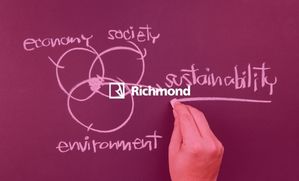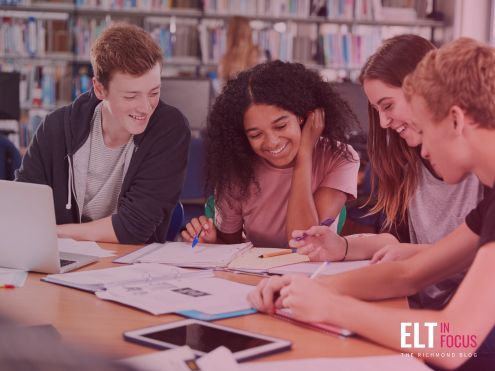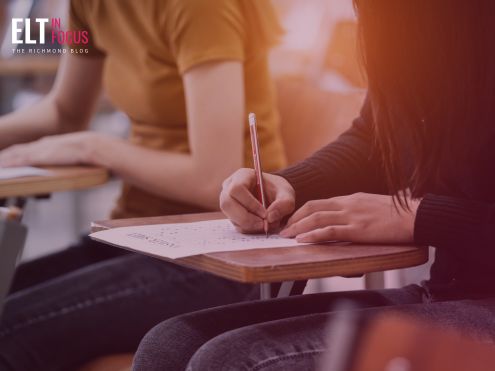IBL (Inquiry-based learning) has existed in different forms for centuries. In IBL, the teacher places much of the responsibility for the learning on the learners themselves, inviting them to ask questions, guiding them to find out the answers and encouraging them to delve deeper and find out more. Many teachers use an inquiry-based learning approach to boost student engagement. Depending on the age and level of the learners, one of four levels of IBL can be used, each with a different degree of learner autonomy and teacher scaffolding.
- Structured inquiry
The whole class engages in one inquiry together, with the teacher leading the process. The inquiry consists of one or more questions, which do not have a single answer. The teacher controls every stage of the process.
- Controlled Inquiry
The teacher chooses the topics and questions, providing learners with what they need to conduct their research but then stepping aside to allow for more independent learning.
- Guided Inquiry
The teacher chooses the questions or topic but gives more agency to learners by allowing them to have control over their research, choosing how to find and share the information they need.
- Free inquiry
Learners choose their own topics and question. They conduct their research and present their findings without any guidance from the teacher. The teacher monitors their progress and observes as they work.
Bringing sustainability into the classroom
For teachers who are interested in addressing aspects of sustainability in the classroom, IBL is an ideal approach to adopt. There is currently a trend to move away from having a single unit on ‘the environment’ in a coursebook and instead to bring sustainability into lessons more frequently. As most, if not all general topics that are addressed in classrooms have a sustainability angle, teachers can think of sustainability as an add-on feature to their existing programmes, dedicating as much or as little time as they wish.
Below are three examples of common topics, each with suggested inquiry questions for different age groups. Learners could engage in the simple step-by-step IBL activity which follows, in the classroom, in an online lesson or as an independent homework activity.
|
Topic: Fashion |
|
|
Primary |
How can we reuse old clothes? |
|
Lower secondary |
How can we recycle a T-shirt? |
|
Upper Secondary & Adults |
Where do my clothes come from? |
|
Topic: Animals |
|
|
Primary |
Which animals live in and around my home? |
|
Lower secondary |
How can animals help humans? |
|
Upper Secondary & Adults |
How can we protect endangered species? |
|
Topic: Travel |
|
|
Primary |
How do people get around my town? |
|
Lower secondary |
Which are the greenest ways to travel around my country? |
|
Upper Secondary & Adults |
How will transport be greener in the future? |
Step-by-step
1- Introduce the topic by showing some pictures or playing a guessing game.
2- Write the question on the board and invite learners to think of some initial answers.
3- Have a class discussion about where learners can find some answers to the question. Make a list. This might include websites or blogs, people in the school or at home, books, newspapers or magazines, maps or other resources.
4- Give learners time to conduct their research and share the information they find.
5- Elicit any new questions that come up as a result of what they find out.
Some questions and topics lend themselves naturally to a further activity such as recycling a T-shirt, creating an informative leaflet, etc.
Scaffolding and support can be done in a number of ways, but a simple KWL chart is a good starting point.
|
K |
W |
L |
|
Here learners brainstorm ideas and write a list of the things they already know about the topic. |
Here learners brainstorm a list of questions or things they want to find out about the topic. |
Here learners write a list of the things they have learnt about the topic after conducting their inquiries.
|
Older learners can add extra columns to their charts. For example:
KWHL
H is where they make some notes about how they can find out the information.
KWHLA
A is where they discuss action they will take as a result of their findings. E.g. Buying fewer clothes.
KWHLAQ
Q is where they make a list of further questions that arise after completing their inquiry.
Try using one of the charts above with your class, with a focus on sustainability? Start by asking the learners themselves to think of an area where the topic they are currently focusing on can link to an environmental issue. Then, invite learners to work in pairs or groups, following steps 1 to 5 above and finishing with short presentations to share their findings.
Click on the link below to find a worksheet you can use for the activity. The activity can be done individually, in pairs or small groups:









